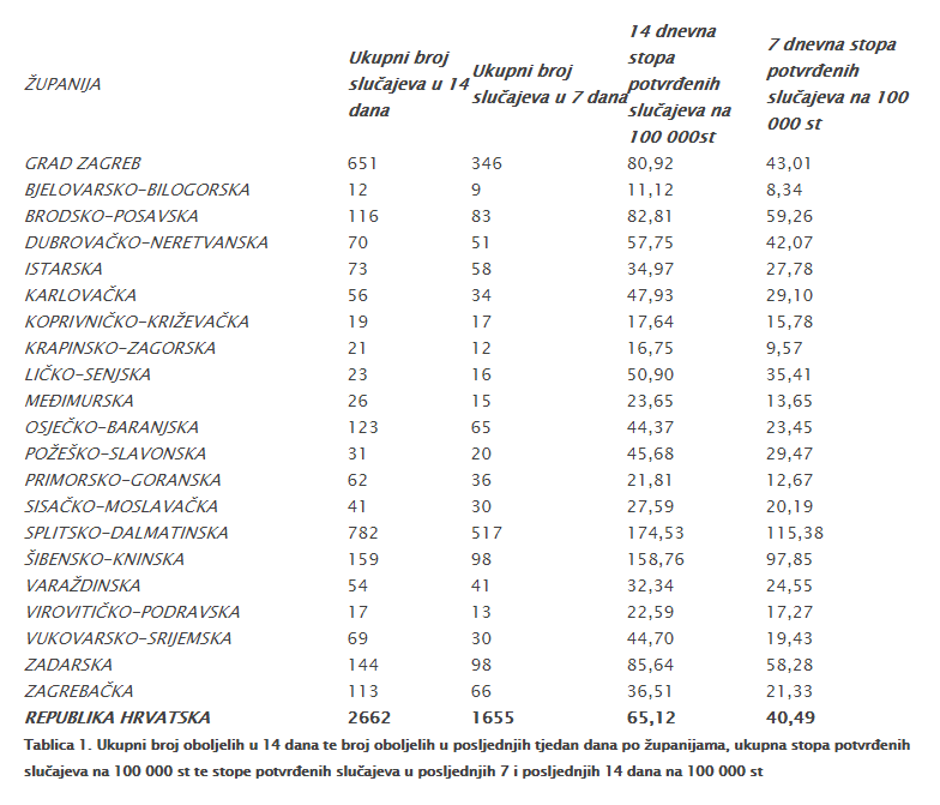August 26, 2020 - The Croatian Institute of Public Health (CNIPH) published a report for the previous week, which was marked by record numbers of new coronavirus cases in Croatia.
Vecernji List reports that from August 17 to August 24, all counties recorded new cases of COVID-19. The highest number of new cases is recorded in Split-Dalmatia County, followed by the City of Zagreb and the Sibenik-Knin and Zadar Counties, which have the same number of new cases in the last week.

HZJZ
Split-Dalmatia County also has the highest 7-day rate, followed by Sibenik-Knin and Brod-Posavina counties. According to the CNIPH, the percentage of those infected at weddings is not as high as it is thought. In the past seven days, it has been confirmed that only 1.68 percent of cases were infected at weddings.
Most tourists were infected in Makarska from July 7 to August 24, and out of the 70 infected, 63 are Austrian citizens. The largest number of patients cites summer vacations and going out to nightclubs as a source of hotspots, and recently, a significant share of sick players from smaller football clubs stands out.
"Last week, a large number of patients from NK Rudes were recorded in the City of Zagreb, and a few from NK Lokomotiva. In Split-Dalmatia County, a football player whose club played a match with NK Marsonia from Slavnoski Brod fell ill. This week, another case from a Split-Dalmatia County club was recorded, and a large number of players from NK Marsonia also fell ill. Two NK Vrbovec players also fell ill, and 5 more players have symptoms," they say.

HZJZ
Also, imported cases from Kosovo, BiH and European Union countries were recorded.
"County epidemiologists in the field have been under great pressure in the last week due to the increased influx of new patients whose epidemiological treatment, in addition to interviews (taking epidemiological history), includes contact processing - i.e., contacting all persons listed by individual patients who are not self-isolated. Despite that, according to information from the field, especially in the most affected Split-Dalmatia County, they still do not have a delay in the treatment of sick people and their contacts," concluded the CNIPH report.
For the latest travel info, bookmark our main travel info article, which is updated daily.
Read the Croatian Travel Update in your language - now available in 24 languages


